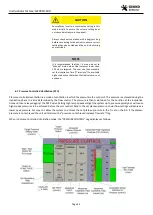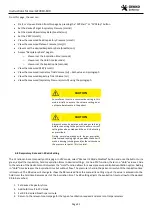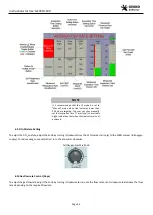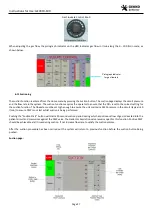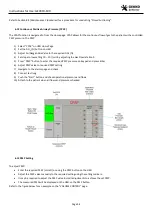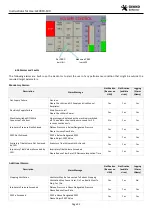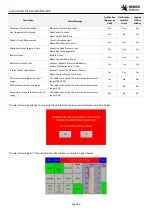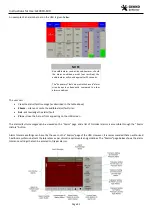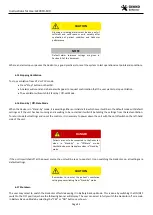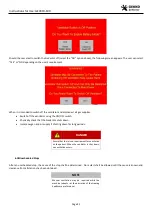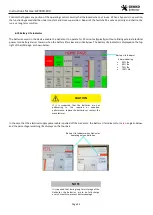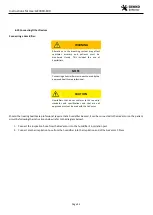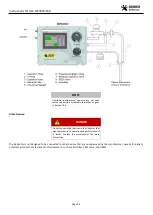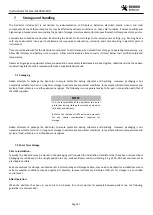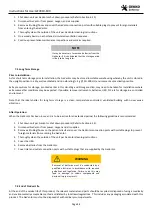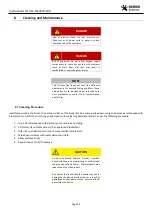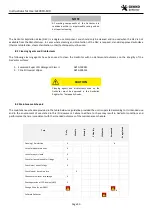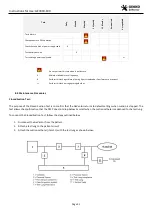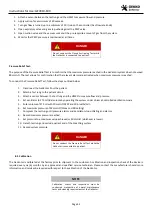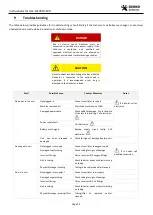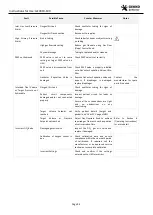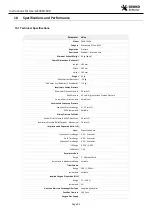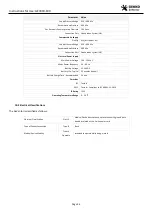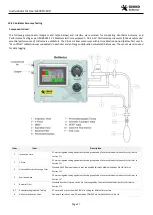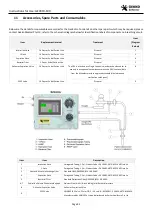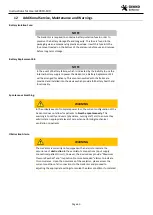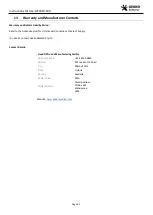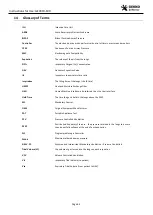
Instructions for Use: GEV019-100
Page 48
1.
Shut down unit per GeVentor shut down procedure (Refer to Section 6.15).
2.
Disconnect GeVentor from power, oxygen, and air supplies.
3.
Remove all tubing/hoses and cover the GeVentor connection ports with suitable plugs to prevent foreign materials
from entering the GeVentor.
4.
Thoroughly clean the outside of the unit per GeVentor cleaning instructions.
5.
On a weekly basis run a shortened, simulated ventilation sequence.
6.
Continue preventative maintenance inspections and work as required.
NOTE
It may be necessary to remove batteries from the
GeVentor if it is anticipated that the storage period
is likely to be long term.
7.3
Long Term Storage
Prior to Installation:
As for short term storage prior to installation, the GeVentor may be stored in suitable warehousing whereby the unit is stored in
the upright position in a dry, well-ventilated and non-vibrating
(< 2 g @ 50…500
Hz) environment as practically possible.
Extra precautions for storage, as noted earlier in this Handling and Storage section, may need to be taken for installations where
extreme weather conditions may be expected. If possible, remove instruments, batteries, HMI, PLC etc for storage in a controlled
environment.
Note that the ideal shelter for long term storage is a clean, temperature-controlled, ventilated building with no excessive
vibrations.
After Operation:
When the GeVentor has been in use and is to be inactive for an extended period, the following guideline is recommended:
1.
Shut down unit per GeVentor shut down procedure (Refer to Section 6.15).
2.
Disconnect GeVentor from power, oxygen and air supplies.
3.
Remove all tubing/hoses on the patient circuit and cover the GeVentor connection ports with suitable plugs to prevent
foreign materials from entering the GeVentor.
4.
Thoroughly clean the outside of the unit per GeVentor cleaning instructions.
5.
Cover the HMI.
6.
Remove batteries from the GeVentor.
7.
Cover inlet and outlet connection ports with suitable plugs that are supplied by the GeVentor.
WARNING
Removal of batteries must be conducted by a
qualified electrician in accordance with required
guidelines and legislation. Failure to do this may
lead to damage to certain components and
personal injury may result.
7.4
End of Product Life
At the end of the service life of this product, the relevant materials and parts should be recycled or disposed of using a medically
and environmentally acceptable method as dictated by local laws/regulations. This includes any packaging associated with this
product. The GeVentor must not be disposed of with ordinary municipal waste.

